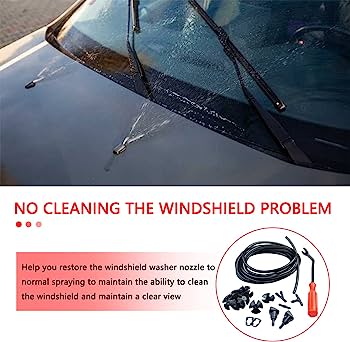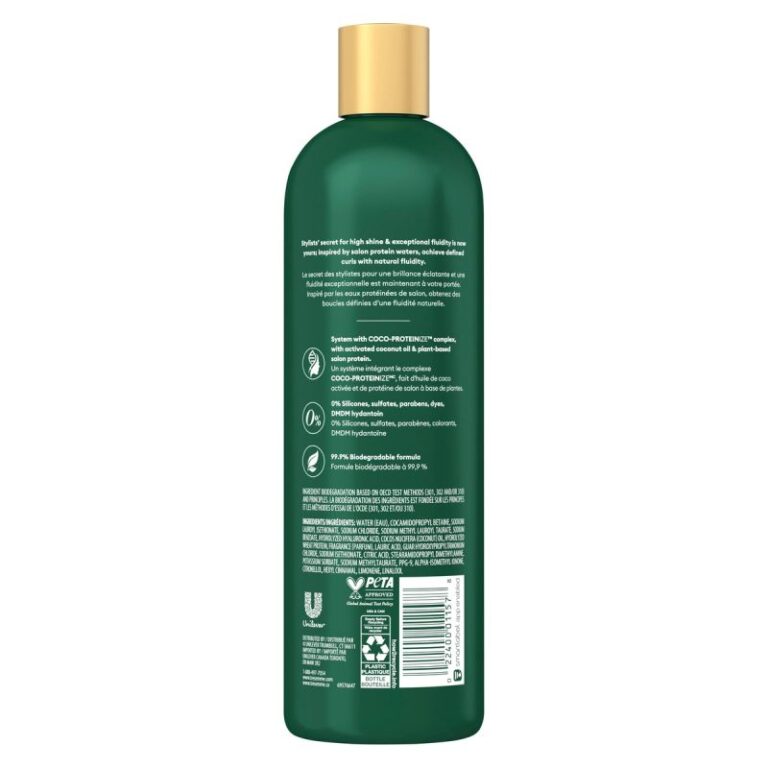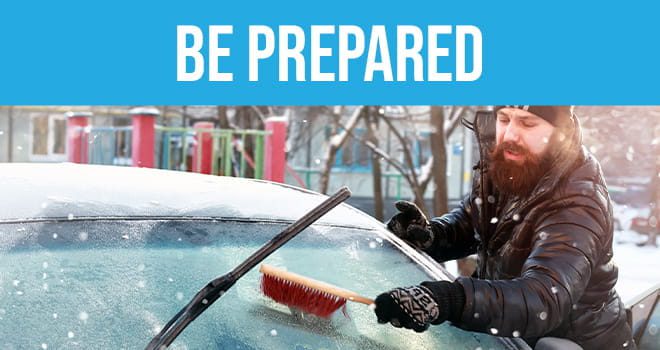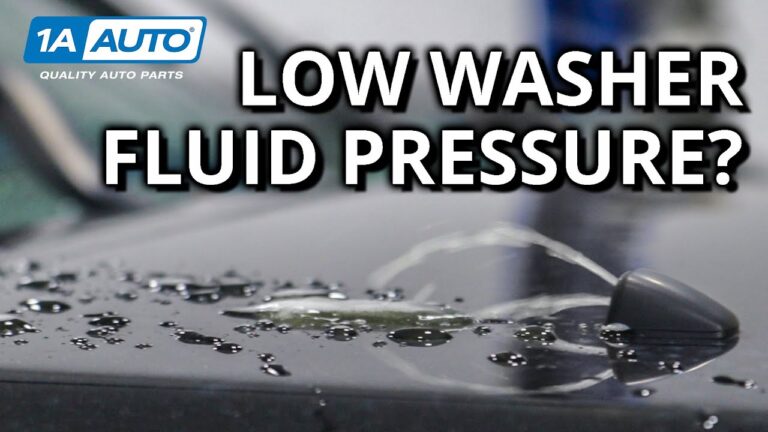Get a Clear View: Windshield Washer Fluid Hose Maintenance Tips
The windshield washer fluid hose carries washer fluid from the reservoir to the nozzles. Windshield washer fluid hose is a crucial component of a car’s windshield cleaning system.
The hose is responsible for transporting washer fluid from the reservoir to the washer nozzles, allowing drivers to easily clean their windshields on the go. The hose must be durable and resistant to harsh weather conditions to prevent it from being damaged or leaking.
If the hose becomes damaged, washer fluid may leak out, and the windshield cleaning system may not function correctly. In this article, we’ll take a closer look at the windshield washer fluid hose and its importance in keeping your car’s windshield clear.
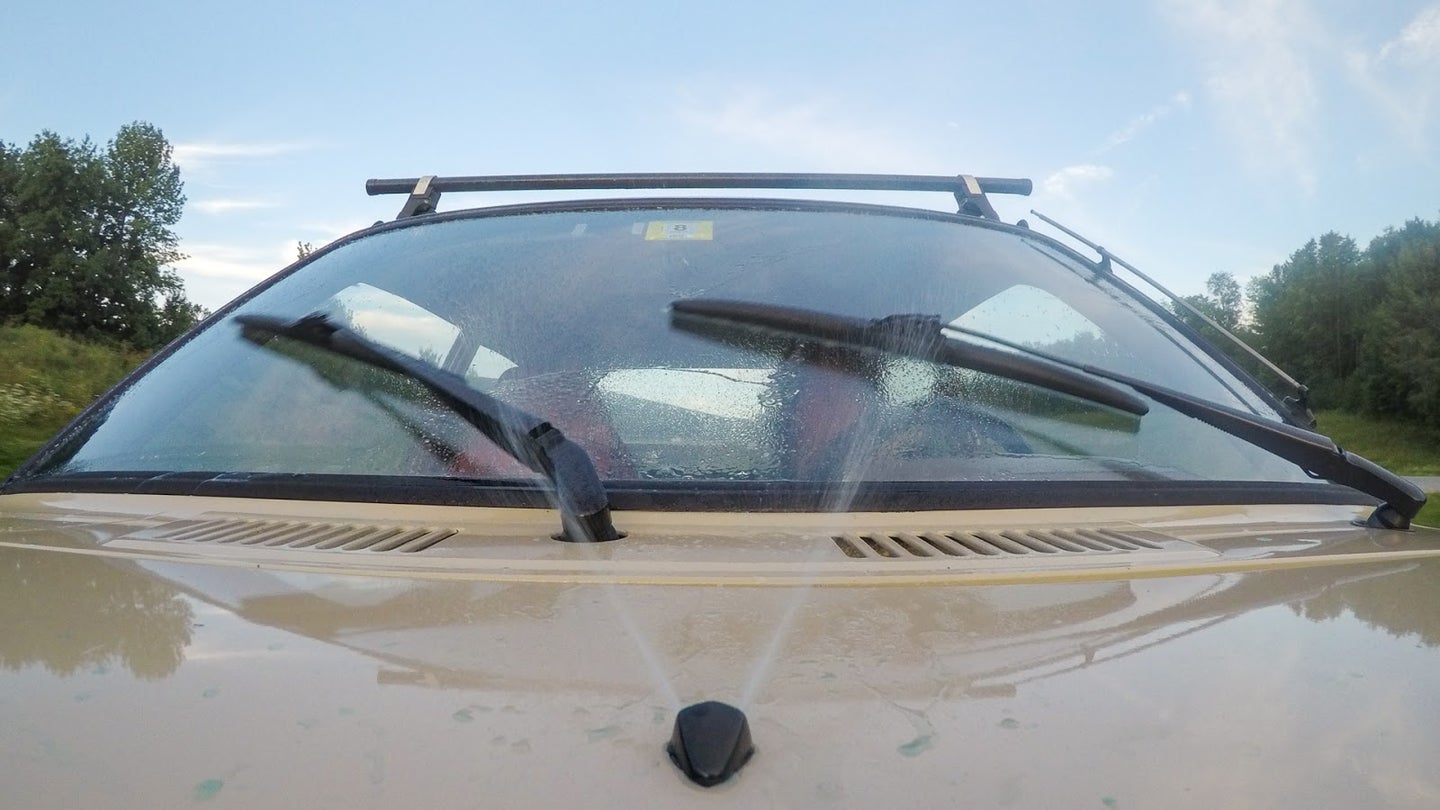
Credit: www.thedrive.com
Common Signs Of Windshield Washer Fluid Hose Issues
Maintaining the windshield washer fluid hose is essential to ensure that your car’s windshield stays clean. However, over time, the hose can develop certain issues that may hamper its efficiency and workings. Here are some common signs of windshield washer fluid hose issues:
Reduced Washer Fluid Spray
If you notice that the windshield washer fluid spray is not as strong as it used to be, it might be due to a clogged nozzle or a disconnected hose. Some other reasons behind this could be a damaged pump or motor, low fluid levels, or even faulty wipers.
To solve this issue, try to unclog the nozzle and check the hose for any disconnections. If that does not work, visit a professional mechanic to replace the faulty parts.
Leaking Washer Fluid
Another issue that could arise with the windshield washer fluid hose is a leak. Whether it’s a tiny drip or a full-blown stream, any leakage can drain the fluid, rendering it useless.
To identify the leak, check for any visible cracks or holes in the hose, pump, or fluid reservoir. If you do find any damage, replace the affected part immediately. In case you cannot spot the leak easily, you may have to get your car to a professional who can test and fix the issue.
Strange Noises From Washer Fluid Pump
If you suddenly notice any unusual noises, such as whirring, grinding, or screeching coming from the washer fluid pump, it indicates that something is wrong. The noise can be a result of a failing motor, clogged nozzle, low fluid levels, or damaged hoses.
To avoid any further damage, get your car to a certified mechanic, who can diagnose and fix the issue. Be sure to do this as soon as possible; otherwise, the problem may escalate.
Washer Fluid Stains On The Vehicle
If you see any washer fluid stains on your car’s body or windshield, it indicates that the fluid is not reaching the nozzle due to a clogged hose or malfunctioning pump. This will not only affect the efficiency of the washer fluid system but can also damage your car’s paint.
To tackle this issue, check the hose for any blockage or disconnection. You may also want to inspect the nozzle to see if it is in good condition. After fixing the problem, wash your car thoroughly to get rid of any residual stains.
If you notice any of these signs, it’s best to address them sooner, rather than later. By staying on top of your car’s maintenance, you can ensure that your car is in good condition and ready for any adventure.
How To Fix Windshield Washer Fluid Hose Issues
Never Ignore The Warning Signs
Your car’s windshield washer fluid hose plays a crucial role in keeping your windshield clean and clear of debris, dirt, and grime. However, like any other component of your vehicle, the fluid hose can experience several issues over time. It is crucial to keep an eye out for any warning signs to prevent further damage.
Here are some warning signs to watch out for:
- Reduced or no flow of washer fluid
- Leaking washer fluid under the vehicle
- A hissing noise when you activate the washer fluid
- Windshield wipers not cleaning the windshield effectively
If you notice any of these warning signs, it’s time to take a closer look at the washer fluid hose and determine whether it needs repair or replacement.
Checking Washer Fluid Hose For Clogs Or Kinks
Before you start replacing your windshield washer fluid hose, it’s a good idea to see if there are any clogs or kinks in the hose that you can remedy yourself. Here are the steps to follow:
- Check the washer fluid reservoir to ensure it’s full of fluid
- Inspect the washer fluid hose for any visible clogs or kinks
- Disconnect the hose from the washer fluid pump and try spraying the fluid to see if it comes out of the hose
- If there is a clog or kink, remove it and reconnect the hose to the pump
Replacing Worn Or Damaged Washer Fluid Hose
If checking the washer fluid hose for clogs or kinks doesn’t solve the problem, you may need to replace the hose. Here’s how to do it:
- Locate the washer fluid hose that needs to be replaced
- Disconnect the hose from the washer fluid reservoir and the pump
- Remove any clamps holding the hose in place
- Install the new hose and reconnect it to the washer fluid reservoir and pump
- Test the new hose by spraying the washer fluid onto the windshield
Replacing a washer fluid hose may seem intimidating, but it’s a relatively straightforward process that you can accomplish on your own with the right tools and some basic knowledge. A little bit of maintenance can go a long way in keeping your car’s windshield clear and free of dirt and grime.
Best Practices For Maintaining Windshield Washer Fluid Hose
Your car’s windshield washer fluid hose does more than spray your windshield with cleaning solution during those messy drives. The hose is also responsible for transporting the fluid from the reservoir to the nozzles. It’s important to keep it in top condition to ensure your windshield is always clear when you need it.
Here are some best practices to follow when maintaining your windshield washer fluid hose:
Regular Inspection
Regular inspections of your windshield washer fluid hose can identify any signs of wear and tear. Such inspections can help detect problems with the hose before they become major and compromise its effectiveness. Here are some things to look for during a regular inspection:
- Cracks or splits in the hose
- Leaks in the hose
- Misaligned nozzles
Replacing Washer Fluid Hose As Needed
When your inspection reveals that your washer fluid hose is damaged, you will need to replace it right away. Continuing to use a damaged hose can cause more problems and lead to higher costs down the line. Here are some signs that your washer fluid hose needs replacing:
- Lack of pressure when spraying
- Drips of fluid from under the vehicle
- Splits or cracks in the hose
Protecting Washer Fluid Hose From Unnecessary Wear And Tear
Protecting your washer fluid hose from wear and tear is important to ensure its longevity and to avoid unnecessary repairs. Here are some tips to consider:
- Keep your washer fluid reservoir full to avoid the unnecessary stress that can be placed on the hose when it pulls fluid from a low reservoir.
- Do not use water or another substance when you need washer fluid, as this can clog the hose and cause it to fail.
- If the weather turns extremely cold, switch to a winter blend of washer fluid so that the fluid won’t freeze in the hose.
Choosing The Right Washer Fluid Hose
When selecting a washer fluid hose, quality matters. A quality hose will last longer and perform better than a poorly made counterpart. Here are some useful tips to keep in mind:
- Choose a hose made of quality materials that will resist damage caused by weather conditions and chemicals such as washer fluid.
- Make sure the hose is the right length for your vehicle to avoid unnecessary strain or tension.
- Check that the diameter of the hose matches the size of the nozzle and pump to ensure the correct flow of fluid and pressure.
Frequently Asked Questions On Windshield Washer Fluid Hose
How Do I Fix A Windshield Washer Fluid Hose Leak?
To fix a windshield washer fluid hose leak, locate the part of the hose that is damaged and cut it out. Next, attach a new hose using clamps and test it to ensure that it works correctly.
Why Is My Windshield Washer Fluid Not Coming Out?
Your windshield washer fluid may not come out due to various reasons, including clogged nozzles, a broken pump or motor, or a frozen or empty reservoir. Check for these common issues and fix them accordingly to get your windshield washer fluid to work again.
How Do I Check My Windshield Washer Fluid Level?
To check your windshield washer fluid level, locate the washer fluid reservoir, which is usually located under the hood of your car. Remove the cap and check the level of the fluid. Refill the reservoir as needed to ensure that it is at the recommended level.
How Often Do I Need To Replace My Windshield Washer Fluid?
It is recommended to replace your windshield washer fluid at least once every six months. This can help to ensure that the fluid remains effective and doesn’t become contaminated with dirt or debris that can harm your windshield wipers.
What Is The Best Type Of Windshield Washer Fluid To Use?
The best type of windshield washer fluid to use will depend on your needs and the weather conditions in your area. Choose a formula that includes an antifreeze agent if you live in a colder climate or one that includes a bug or dirt remover if you frequently drive in dusty areas.
Conclusion
As we’ve learned, the windshield washer fluid hose is an essential component of your car’s washer system. It’s responsible for delivering fluid to the windshield for optimum visibility while driving. Without it, your vehicle is at risk of decreased visibility, which can be incredibly dangerous.
It’s important to regularly check your hose for any damage or leaks to ensure that it’s functioning properly. If you do discover any issues or suspect that your hose may need replacing, take action right away to avoid any further problems.
Overall, paying attention to the small details of your car’s maintenance can greatly increase your safety on the road. Always prioritize keeping your car in tip-top shape and don’t hesitate to seek professional help when necessary.

